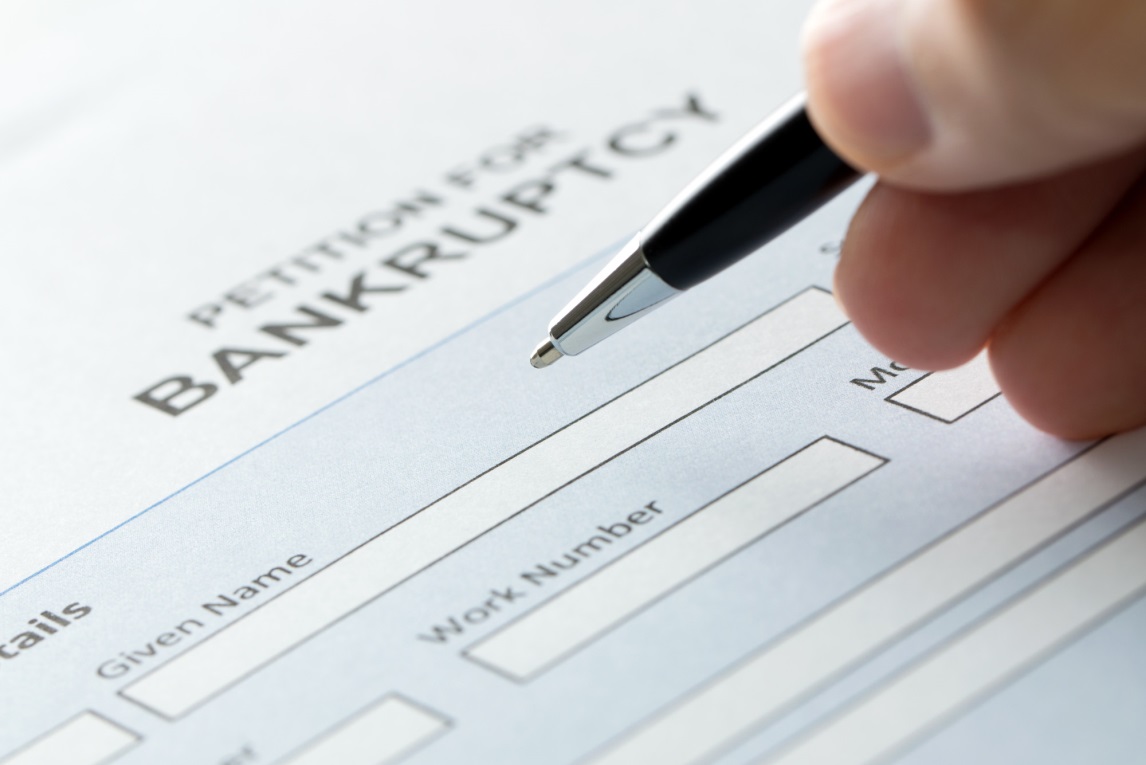The Coronavirus pandemic has had a catastrophic impact on the US economy, so much so that a record 46 billion-dollar companies have filed for bankruptcy so far. This is just a tip of the iceberg, though, because there over 150 companies with liabilities exceeding $50 million that also filed for bankruptcy this year.
Businesses are not the only ones filing for bankruptcy, though, because personal bankruptcies are following suit. If you’re afraid you’re one of these people, then you need to know how to file for bankruptcy. Bankruptcy may be just what you need to wipe your slate clean and have a fresh start.
1. Is Bankruptcy the Best Option for You?
While bankruptcy may seem like an appealing option to get out of debt, is it really ideal for you?
Understanding whether you should even file for bankruptcy in the first place is the first step, then understanding which chapter is the next. Bankruptcy is an incredibly powerful debt relief tool that will provide you immediate relief through the automatic stay.
The automatic stay is the law that will prohibit creditors from coming after you as soon as you file for bankruptcy and stop the wage garnishment. You can choose to file on your own, but it’s advisable to hire a bankruptcy attorney to help with the case process. There are several things you need to know to understand how to file for bankruptcy.
Understand that getting bankruptcy is not guaranteed because it’ll highly depend on the court’s decision. There is so much more to bankruptcy than most people realize because you can’t just get in court and tell the judge you’re broke. You need to provide the right documentation and prove that this is the right step for your financial situation.
The process will be both confusing and complicated, but if you need bankruptcy help, a lawyer could make things easier for you. A reputable debt relief firm will offer you professional advice, and you will have peace of mind knowing that professionals are handling your case.
2. Decide Which Bankruptcy Chapter Is Most Suitable
Once you choose to file for bankruptcy, you need to realize there are several chapters available, from chapter 7 to 13. Most individual bankruptcies are filed under 7 and 13, but your lawyer should advise you accordingly, depending on your financial situation and offer optimum bankruptcy help.
Chapter 7 Bankruptcy
One of the best things about Chapter 7 bankruptcy is that you can wipe most of your general unsecured debts, and you won’t have to pay them back through repayment plans. However, some of your assets will need to be liquidated and sold to pay some of your creditors. This means it will work best for you if you have little or no assets to lose.
Qualifying for Chapter 7 bankruptcy may not be easy for everyone because you must meet certain income qualifications. If you’re a high-income earner, there is no way for you to qualify, and the “means test” will determine whether your income is low enough. If you fail the test, you’ll have to file under Chapter 13 instead.
You also need to understand that when you get a bankruptcy discharge, some non-dischargeable debt will not be wiped out. These kinds of debt include student loans, recent tax debts, alimony, and child support. Also, if you happen to have co-signers for your debts, they will not be protected by the bankruptcy either.
Chapter 13 Bankruptcy
Chapter 13 bankruptcy is for people with regular income or wages that allow them to continue paying their debts under arranged repayment plans. With this chapter, however, you get to keep all your assets, and you’ll get to pay your creditors the value of your non-exempt properties, like your car. This chapter is usually a good option for people who have fallen behind on payments, but want to get a break and catch up and keep their properties as well.
3. Collect Your Documents
Now that you know what kind of bankruptcy you need to file, it’s time to gather all your financial documents to check the current state of all your finances. Filing for bankruptcy starts with getting a free copy of your credit report, which you’re entitled to from each credit bureau. You can get one free copy every year so take advantage of that right now.
You’ll find some of your debts, including medical bills, payday loans, personal loans, and tax debts listed on the credit report. At this point, you may want to know all the debts not listed on the report so you can make a separate list. In addition to your credit report, you’ll also need to have your tax return documents for the past two years.
You need your pay stubs and documents showing proof of income for the past six months, and recent bank account statements. Beyond that, you need appraisals or valuations of any real estate properties you own, retirement or brokerage account statements, vehicle registration copies, and other documents listing any debts, income, and assets.
4. Go for Credit Counseling
Everyone who decides to go for bankruptcy must go for credit counseling, whether it’s Chapter 7 or 13. It’s a course that takes six months to complete, and you have to complete it before the bankruptcy petition is filed in court. You must also take the course in an agency that’s approved by the Department of Justice.
The credit counseling course intends to help you realize whether you actually need to file for bankruptcy, or you could just get back on track with your payments through informal repayment plans. One of the best things about the source is that you can take it online, or even though the phone. The course is relatively cheap, but if you can prove that you live under the 150% federal poverty line, you can have the fees waived.
You will get a certificate of completion upon completion, and you need to keep it safe. The bankruptcy court will need to see it during the court proceedings.
5. Complete Your Bankruptcy Forms
There are many different bankruptcy forms you need to fill out so you can give as much information as possible about everything you owe, own, spend, and earn. In the forms, you’ll also state what kind of bankruptcy you’re filing and whether you’re doing it alone or with the assistance of an attorney.
If you do choose to hire legal counsel, they will complete all these forms for you based on the information you provide. If you can’t afford a professional bankruptcy lawyer for bankruptcy help, you can get an appointment with a legal aid provider and see how they can be of assistance.
6. Print Your Bankruptcy Forms
Once you are done with all the forms and pay the filing fees, you need to print them out single-sided so you can take them to court. The court doesn’t accept double-sided forms, and you need to sign them once they are printed out. You’ll need your paycheck stubs, credit counseling cert, partition forms, and the application for a fee waiver if you can’t afford to pay the filing fees.
7. File Your Bankruptcy in Court
It’s advisable to call the courthouse in advance and ask how many copies they will need, just to be on the safe side. When you get there, give out your filing fees together with your forms, but not the tax returns or bank statements. These documents will go to the trustee once you are done filing, and if you have an attorney, they will take this step for you.
Once you’re done, you will receive the bankruptcy case number, your trustee’s name, and the date and time of your 341 meeting. The 341 meeting is also known as the Meeting of Creditors, and you’ll get to meet with your trustee. It’s at this point when you get your automatic stay, after which you will be protected from your creditors.
After this, you need to mail the documents to your trustee. The trustee is the official entrusted by the court to liquidate or sell your assets and oversee your case. Both Chapter 7 and 13 require a trustee, but not every type of bankruptcy does.
You will receive mail from your trustee in response to the forms, and they may ask for additional documents, like the bank statements and tax returns. You need to send what’s requested or risk not getting a discharge of the debts.
8. Go for the Second Bankruptcy Course
Once you’re done filing for bankruptcy, you must complete a second course, which is the Debtor Education Course. This also needs to be from an approved counseling agency. The intention of this course is to educate you on making better financial decisions moving forward.
They will teach you how to budget and how to avoid high-interest debts, and you must complete the course and get a certificate to qualify for the bankruptcy discharge. You need to know so many things on how to file for bankruptcy, but you need to understand that these courses are very important.
9. Attend the 341 Meeting
Your meeting of creditors, on average, will take about a month after you file for bankruptcy. During this pandemic period, the meetings are held through video chats or phone calls, but this may change soon. The major reason for this meeting is for the trustee to meet you, verify that you’re the one filing for bankruptcy, and ask a few standard questions.
It’s vital for you to take your government ID or your social security card so they can verify you, and don’t forget the bankruptcy forms and any forms the trustee asked for. These meetings are usually quite short because despite the fact that the creditors are invited to ask any financial questions they may have, most never do.
10. Rebuild Your Credit
Your credit is bound to take a hit after the bankruptcy filing, but it may have been pretty bad anyway, so you still need to rebuild it. The thing is, rebuilding your credit without the overwhelming debt that was holding you back will be easier. If you have a regular income, you can get back on track a few months after the bankruptcy discharge.
How to File For Bankruptcy: What You Need to Know
If you need to, now you know how to file for bankruptcy. It will take time and preparation, but things will eventually come to an end if you follow these steps. If you can afford an attorney, the process will be a lot easier for you. After you file for bankruptcy, you need to learn more about money management and other legal matters to get your life together.
Please check out our blog for informative posts on these and more topics!







